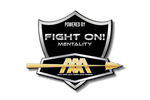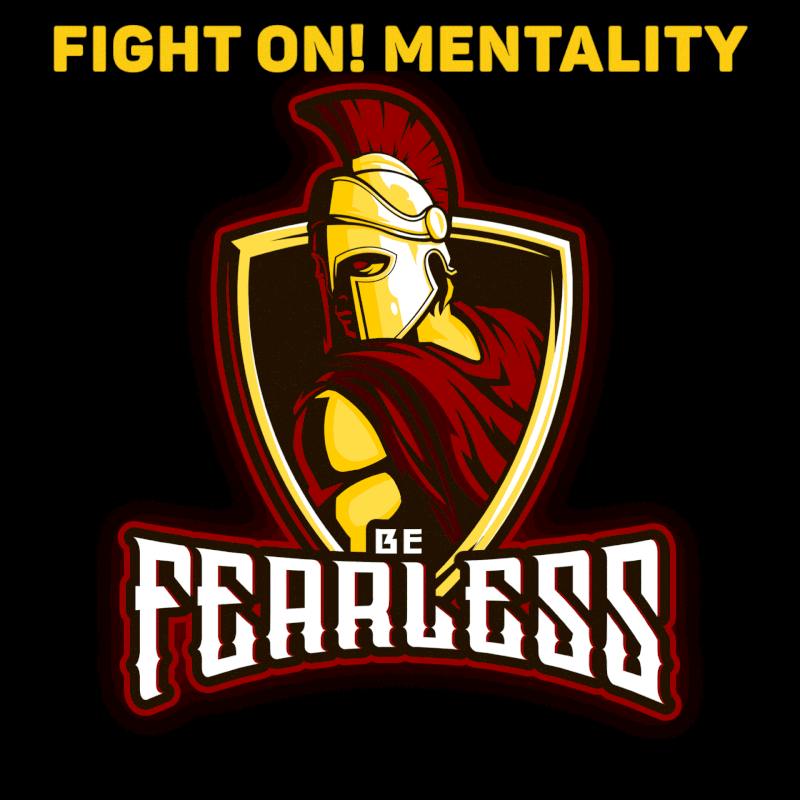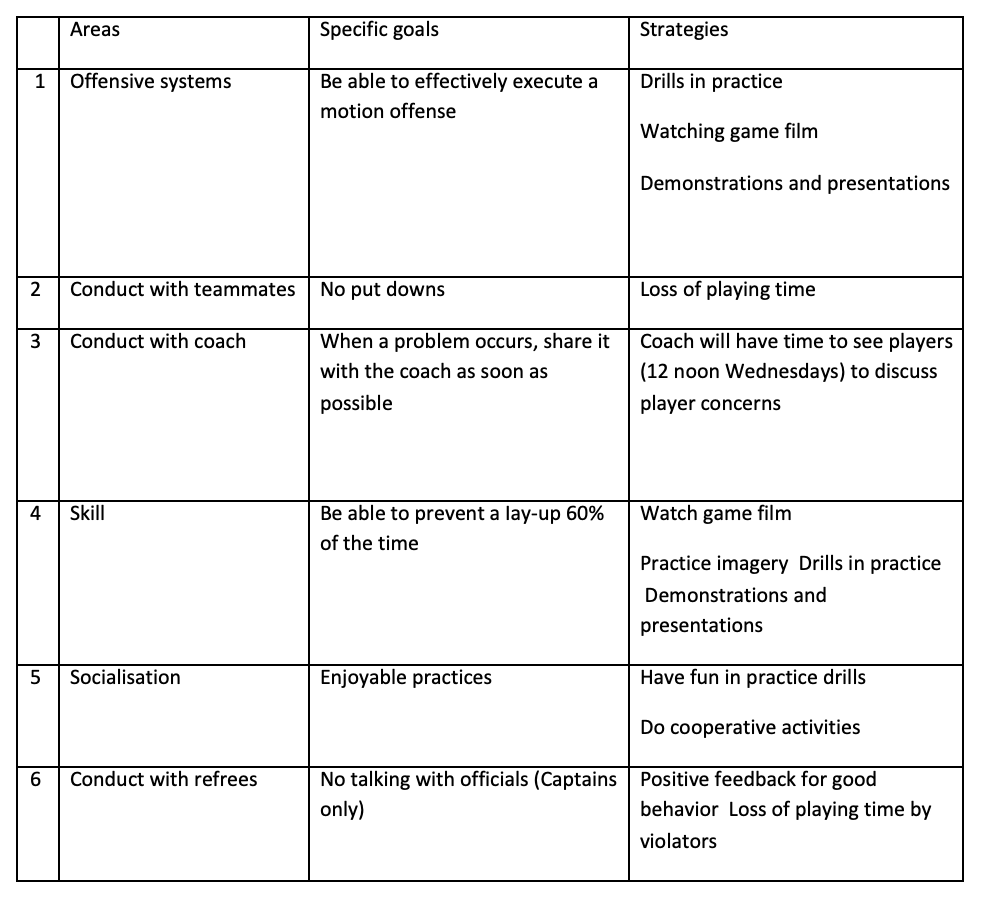Lesson: Goal Setting
A. Setting Specific Goals
It is very important that we set goals in all major areas of our play, as well as make each
goal very specific, and have strategies in place to help us achieve them.
For example:
It is very important that we set goals in all major areas of our play, as well as make each
goal very specific, and have strategies in place to help us achieve them.
For example:
B. Writing a Specific Goal (Questions to consider)
C. Goal-Setting Checklist
Set near term goals, long term goals, and Fight ON!
- What do you want to achieve (E.g.: I want to be able to play better defense on the drive to the basket).
- Describe the behavior you want (E.g.: Be able to cut off the baseline by staying low, over-playing and shuffling in a defensive stance).
- State the condition of behavior desired (E.g.: Playing defense in the defensive zone, near the basket).
- What is an acceptable performance level to you (E.g.: To be able to prevent the lay-up 3 out of 5 times during practice today)?
C. Goal-Setting Checklist
- Is this goal specific? e.g. My goal for practice is to make five free throws. This makes it easier to measure goal achievement.
- Is the goal reasonable? Goals should be dificult yet attainable. (e.g. if you currently sink five free throws out of ten, a reasonable goal would be to have six successful free throws).
- Be flexible. You may have to adjust your goals (i.e. If you are sick or injured). If you continue to have 5 or less successful free throws, then 6 is a realistic target.
- Read how your last practice went and set your present goals based on that.
- Keep in mind what your long term goals are when setting your short term practice goals.
- Use imagery as a tool to help achieve your goals. (e.g. if your goal is to make five free throws, you may want to have cue images to remind yourself of what you need to do to shoot well, i.e. "Seeing the ball leave your fingertips", "Seeing a large rim", etc)
- Visualize your practice goals before you step onto the court for practice.
- Visualize your game goals before you step onto the court for the game.
- Be descriptive about your goals so that you can develop a mental picture (i-e., visualize them). (e-g. "I want nothing but net.").
- State your goals using positive words. "I will make five free throws today". Remember to use positive images at all times.
Set near term goals, long term goals, and Fight ON!


